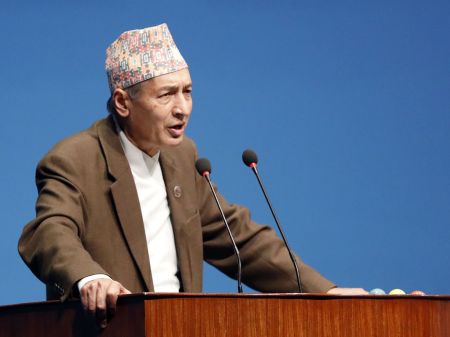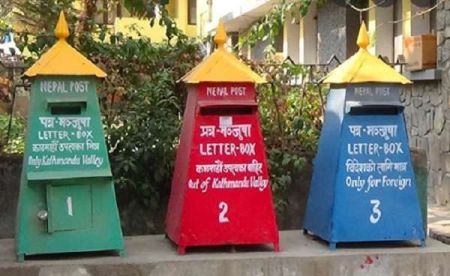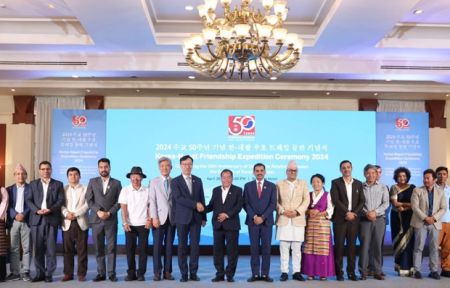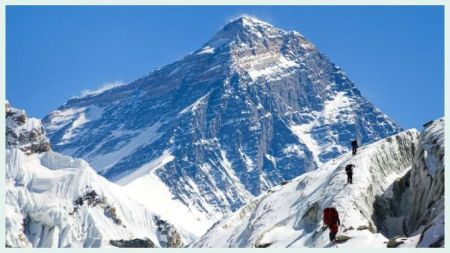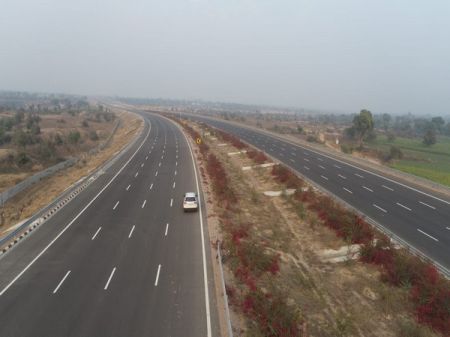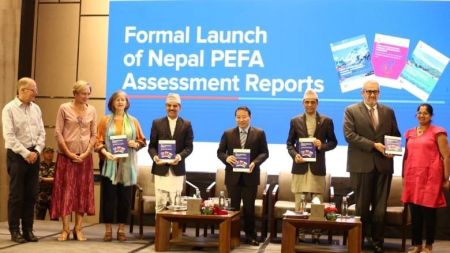BY Rajendra Prasad Adhikary
The United Nations (UN) Secretary-General's visit to Nepal just weeks before the COP-28 meeting in Dubai was of great significant importance. The historical trip marked the physical presence of the top dignitary of the UN to witness firsthand the impacts of climate change on the Himalayas. The visit also served as an assessment of the tasks that Nepal has been doing since it became a member of the global body in December 1955.
Secretary-General Antonio Guterres said during his public engagements that Nepal has been working closely with the United Nations. Beyond its routine functions as a member nation, Nepal has been supporting the UN's peacekeeping efforts by deploying peacekeeping forces continuously since 1958. The country has also played an active role in the mitigation of climate change impacts aligning with the UN's Sustainable Development Goals. Nepal has been a part of 44 peacekeeping operations so far thereby helping restore peace and harmony in conflict zones worldwide.
Despite the UN's commendable efforts to maintain global peace, the global body's shortcomings in various instances have raised questions about its very existence. Ongoing wars and inhumane atrocities among conflicting nations seemingly fall beyond the UN's control. Simultaneously, achieving the Sustainable Development Agenda has proven to be challenging for many nations particularly amidst the chaos of climate change impacts. This is exacerbated by a few powerful nations driving industrial economic growth with fossil fuels. The majority of the global poor find it challenging to perceive the UN's existence and cooperation despite its continuous efforts over the past seven decades. Many are severely affected by natural disasters caused by global warming or are forced to live in danger zones of war-affected areas.
The League of Nations was established in 1919 with the goal of creating an international platform to restore peace and foster cooperation among nations that had participated in World War I from 1914 to 1918. However, the League of Nations was unable to quell animosities among nations, ultimately leading to the outbreak of the Second World War. The League of Nations became obsolete when countries such as Germany and Italy in Europe, and Japan in Asia, engaged in territorial annexation wars, which resulted in World War II.
In the aftermath of World War II, the United Nations was officially established in 1945 as the warring nations agreed to embrace a peace-building agenda. However, the efficacy of the United Nations in recent times has diminished as countries are facing challenges in achieving unanimous agreement within the Security Council. This is exacerbated by the polarisation of the US and Russia and deepening economic tensions between the US and China. In the prevailing geopolitical landscape, the nonaligned policy adopted by many nations is proving inadequate. Countries today adapt their foreign policies based on the situation, with considerations such as fuel purchase, food availability, weapons trade, and political doctrine often overshadowing principled procedures when voting in the UN Security Council.
Despite being a small, landlocked nation surrounded China and India, Nepal has played a crucial global role in the post-World War II era. It actively contributes to restoring global peace by deploying peacekeeping missions. Additionally, Nepal's forest cover, constituting 45% of its territory, contributes to atmospheric carbon sequestration in support of the UN's climate change impact mitigation agenda.
The visit of the UN Secretary-General to the Himalayan terrains affected by global warming underscores the urgency of climate change action. This global agenda, focused on acknowledging and addressing the reality of climate change, is more sensitive than the causes that have fueled human-led wars. The irreversible consequences faced by the Himalayas, particularly the loss of snow cover on mountains due to global warming, call for urgent actions.
The water scarcity looming over the vast majority of the population in South Asia, dependent on waters sourced from the Hindu Kush Himalaya, is a matter of significant concern. The Himalayas feed 19 major rivers, including the Ganges, Indus, Brahmaputra, Jhelum, and Sutlej, nourishing a significant portion of the global population residing in the floodplains.
Nepal's forest cover, constituting 45% of its territory, contributes to atmospheric carbon sequestration in support of the UN's climate change impact mitigation agenda.
The COP-28 has set targets to reduce fossil fuel use to contain global temperature growth within the desired limit of 1.5 degrees Celsius. Nepal, along with 50 other nations, has submitted a national adaptation plan to the UN, targeting new adaptation and mitigation techniques. However, industrialised nations holding UN veto power remain unclear on the action plan for loss and damages to be paid to countries like Nepal which are affected by the impacts of climate change.
Focusing on the specific impact on Nepal, climate change is evident in the waters of rivers and streams, with excess flooding during monsoons or extremely low flow in lean periods. The importance of fresh water flowing through the Himalayas will become increasingly precious as the water quantity reduces due to depleting snow, while the demand for fresh water continues to rise. The challenge lies in finding a balance between human use for drinking and power production and environmental use to preserve the water that sustains the lives of plants and animals.
The government’s decision to prioritise hydropower over fossil fuels align with the UN agenda as targeted in successive COP conferences. The government's liberal policies have spurred private sector involvement in hydropower production which has increased green energy output. Nepal is not only meeting domestic needs but also exporting energy to neighbouring countries. To address the escalating trade deficit, the government has boosted investment in hydropower infrastructure, private banks are pouring investments in hydropower projects, and even common people are supporting these endeavours by subscribing to public offerings of hydropower companies. Nepal is also engaged in a regional cooperation for green energy trading with India and Bangladesh.
However, challenges arise due to the absence of transmission lines, leading to a significant amount of electricity remaining unused in powerhouses. Forest covers between powerhouses and consumption points pose hindrances due to concerns about potential environmental impacts on trees and animals from high-voltage transmission lines. While hydropower and forest resources fall under the umbrella of environmental-friendly practices, the hindrances in smooth electricity transmission through jungle areas result from a mismatch in policy documents governing forest and environmental protection. This leads to the mandatory requirement of Environmental Impact Assessments (EIA) for laying transmission lines.
Preserving forests at the cost of discouraging hydropower generation contradicts the zero-emission target set in the UN agenda. Moreover, Nepal's forests cannot sequester the carbon emitted by neighbouring industrial giants like China and India, with annual emissions of 11.47 billion and 2.91 billion metric tonnes, respectively, compared to Nepal's minimal 0.00534 billion metric tonnes.
The dual commitment to global peacekeeping missions and dedicating substantial areas to forest resources for global atmospheric carbon sequestration are overburdening Nepal. Challenges like depleting water, increasing flood hazards, and hydropower transmission disruptions due to forest covers are threatening Nepal's green power mission. The transmission and consumption of green power should be viewed as a holistic climate action mitigation and adaptation effort. Stringent clauses that adversely impact the livelihoods of the majority of poor people should not be applied in the context of global carbon trade, as the UN charter is intended to be equally applicable to all nations, irrespective of their size and location.
(Adhikary is an engineer and served Nepal government in various high level capacities.)






